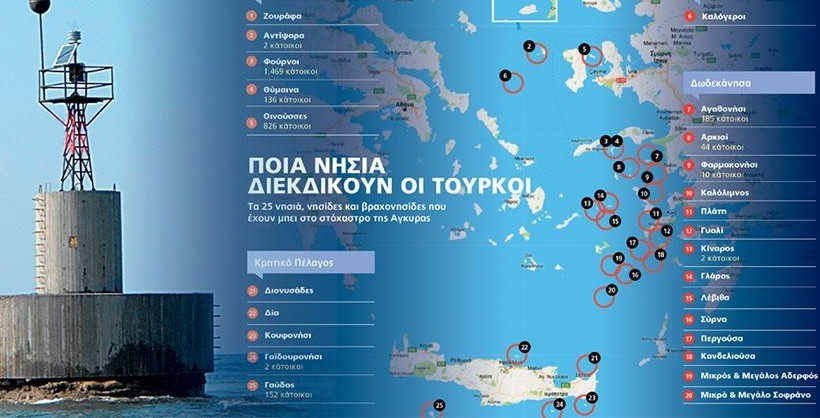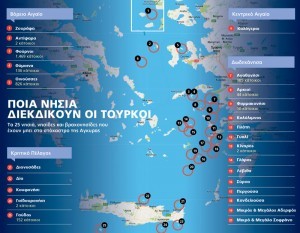Turkey’s bellicose stance towards Greece on the status quo of islands in the Aegean Sea is not something that has emerged out of the blue. The adoption of of a well planned policy that disputes the sovereignty of Greece over a series of islands and island rocks in the Aegean Sea began after the two countries came close to a military conflict in 1996 over the rock island of Imia. A secret list drawn up by the Turkish Foreign Ministry, called “EGAYDAAK”, maps out a total of 152 islands and rock islands (25 islands and 127 rock islands), which Turkey believes Greece has no claim over, essentially rejecting the Lausanne treaty that had settled their status quo. EGAYDAAK stands for ‘Islands, islets and rock isles whose domain was not conceded to Greece’ via international treaties as Turkey claims. These are small island clusters in the central Aegean Sea and , as well as islands off the coast of Crete, including Gavdos. “We come across this notorious acronym ‘ EGAYDAAK’ in 1996 through a manual published by the Turkish Military Academy”, says retired Brigadier General of the Greek army and Geostrategic analyst, Christos Minayias. Turkey claims that the 1923 Lausanne Treaty, which ratified Greek sovereignty over the eastern Aegean islands that had been liberated in the first Balkan Wars of 1912-1913, as well as the 1947 Paris treaty which had forced Italy to concede power of the Dodecanese to Greece failed to include a series of islands, isles and island rocks by their specific names. However, these claims are disproven by the Treaties, as they are included.
The Aegean Islands Turkey disputes Greek sovereignty (map)
Strategic goal to force Greece to relinquish national sovereignty in Aegean


































